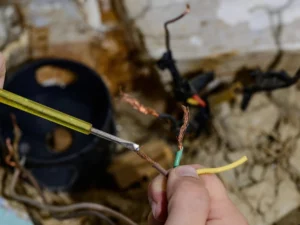 Outdated electrical wiring is more than just an inconvenience, it’s a ticking time bomb for homeowners. As wires age, their insulation can degrade, exposing them to moisture and creating the perfect conditions for short circuits and electrical fires. Furthermore, old wiring often cannot handle the demands of modern appliances, leading to overloaded circuits and increased risk of overheating. Signs of trouble include flickering lights, persistent tripping of breakers, or the smell of burning. These red flags should never be ignored, as neglecting them could result in costly damage or even endanger lives.
Outdated electrical wiring is more than just an inconvenience, it’s a ticking time bomb for homeowners. As wires age, their insulation can degrade, exposing them to moisture and creating the perfect conditions for short circuits and electrical fires. Furthermore, old wiring often cannot handle the demands of modern appliances, leading to overloaded circuits and increased risk of overheating. Signs of trouble include flickering lights, persistent tripping of breakers, or the smell of burning. These red flags should never be ignored, as neglecting them could result in costly damage or even endanger lives.
The good news? There are proactive measures homeowners can take to ensure their electrical systems remain safe and functional. Regular electrical inspections by a licensed professional can identify problems before they escalate. Upgrading to modern wiring systems, such as non-metallic sheathed cables or flexible conduit wiring, not only ensures safety but also enhances energy efficiency and reliability. Homeowners should also consider installing circuit breakers with overload protection to provide an added layer of security. Taking these steps can prevent dangerous malfunctions and create a safer home environment for the long term.
Recognizing when it’s time to replace old wiring is crucial. If your home was built several decades ago and still uses aluminum wiring or knob-and-tube systems, it’s likely time for an overhaul. Additionally, if you’ve added significant electrical loads, such as new appliances or tech-heavy upgrades, your system may need to be reevaluated. Don’t wait for an emergency to act—consult with a professional electrician to assess your system’s health and plan for necessary upgrades. A little investment in modern wiring can save you from a world of trouble down the line.